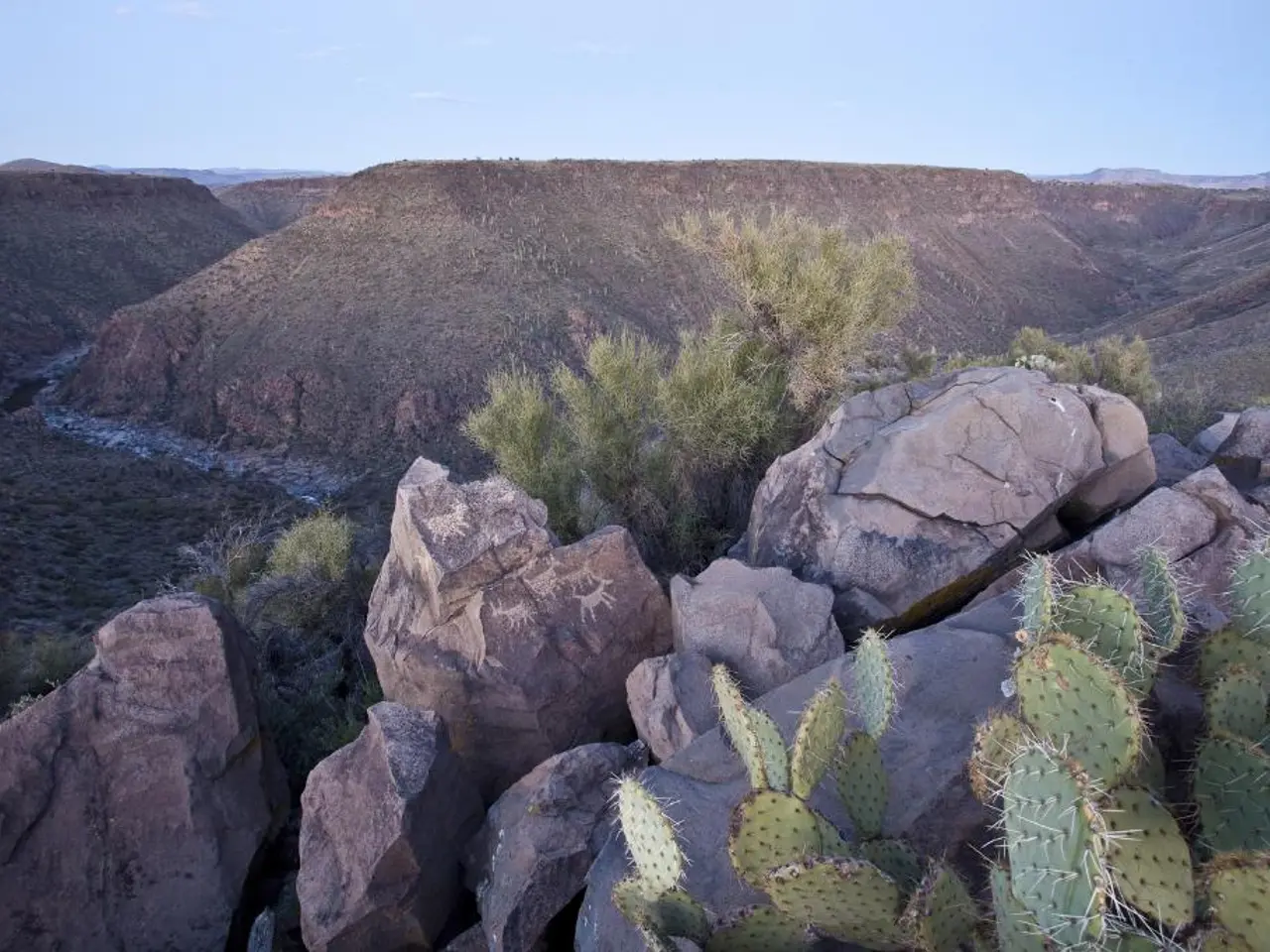Beneath Mount Fuji, Japan, lies an intriguing lava cave shining with 10-foot tall ice pillars.
================================================================================
Nestled at the foot of Mount Fuji lies the Narusawa Ice Cave, a unique natural wonder that offers a glimpse into Japan's volcanic past. This 490-foot-long tunnel, with a maximum height of over 12 feet, was born from the eruption of Mount Fuji in A.D. 864.
Long before it became a tourist destination, the Narusawa Ice Cave served as a natural refrigerator, preserving seeds and silkworm cocoons. Its internal temperature, maintained at an average of just 37°F (3°C), made it an ideal storage facility. In winter and early spring, dripping water from the cave's ceiling freezes to form massive stalactites and stalagmites, adding to its icy charm.
The ice pillars in the Narusawa Ice Cave were not just decorative. They were cut into rectangular blocks to construct iceboxes for storing sensitive biological materials before mechanical refrigeration was available. This makes the Narusawa Ice Cave a precursor to Japan's refrigeration industry.
The Narusawa Ice Cave is part of a fascinating volcanic circuit, along with the Fugaku Wind Cave and Lake Sai Bat Cave. The Fugaku Wind Cave, located 800 meters east of Narusawa Ice Cave, absorbs sound, creating a silent atmosphere. Unlike the Narusawa Ice Cave, it features deep subterranean passages, impressive lava textures, and rare moss colonies.
Walkways and lighting guide guests safely through the caves, creating a sensory immersion into Japan's volcanic underworld. The triad of caves—Narusawa, Fugaku, and Lake Sai—make up a captivating exploration for visitors.
Remnants of ancient trees, toppled by the lava flow during the 864 eruption, are preserved within the Narusawa Ice Cave. These tree remnants serve as natural time capsules, offering insights into the environment and climate conditions of early Heian-period Japan.
The Narusawa Ice Cave is operated by the Wind Cave & Ice Cave Company, a subsidiary of the Fujikyu Group, which provides year-round access to visitors. The best time to witness the ice columns is between January and April.
The eruption of Mount Fuji not only formed the Narusawa Ice Cave but also the Aokigahara lava plain, now draped in the Sea of Trees forest. The Narusawa Ice Cave stands as a testament to Japan's volcanic past, a fascinating and chilling reminder of the power of nature.
Read also:
- Understanding Hemorrhagic Gastroenteritis: Key Facts
- Stopping Osteoporosis Treatment: Timeline Considerations
- Tobacco industry's suggested changes on a legislative modification are disregarded by health journalists
- Expanded Community Health Involvement by CK Birla Hospitals, Jaipur, Maintained Through Consistent Outreach Programs Across Rajasthan








